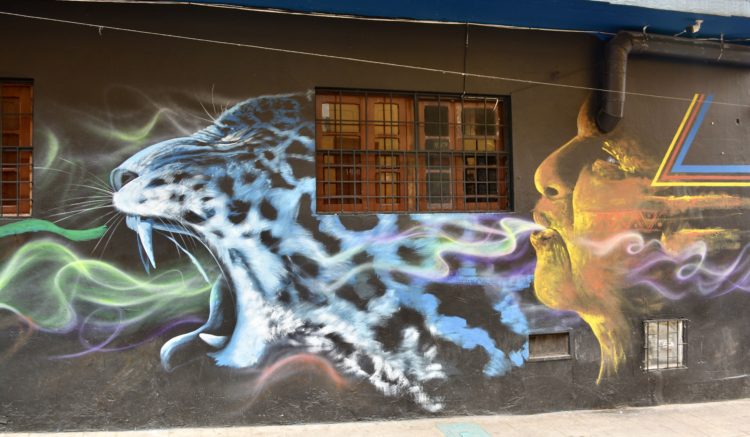After the hiatus of the pandemic, the world is beginning to open up and we decided to gently return to international travel by returning to Colombia, a country we last visited in 2018. We made the choice not to cross to many international frontiers, and with Avianca, the national airline of Colombia resuming its direct route to London, and initially heavily discounted, it felt an opportunity not to be missed. Colombia, like many countries has had a brutal time with Covid, but the current data shows that it has lower infection rates than most of Europe and comparable and in many cases higher vaccination rates, so we felt that the risks of visiting were as acceptable as they could be in the pandemic world.
Our arrival into the country was smooth, with no queues at the airport, though the plane did land in the very early hours of the morning. In Bogotá mask wearing is pretty universal, both outside and inside, and Covid vaccination certificates are inspected on entrance to all bars, restaurants, museums etc.
Another major change, in Bogotá at least, is that electronic payments and ApplePay work pretty universally. In addition at least with O2, data roaming works out of your UK allowances, with no extra costs. Having an operational phone connected with data is becoming increasingly important.
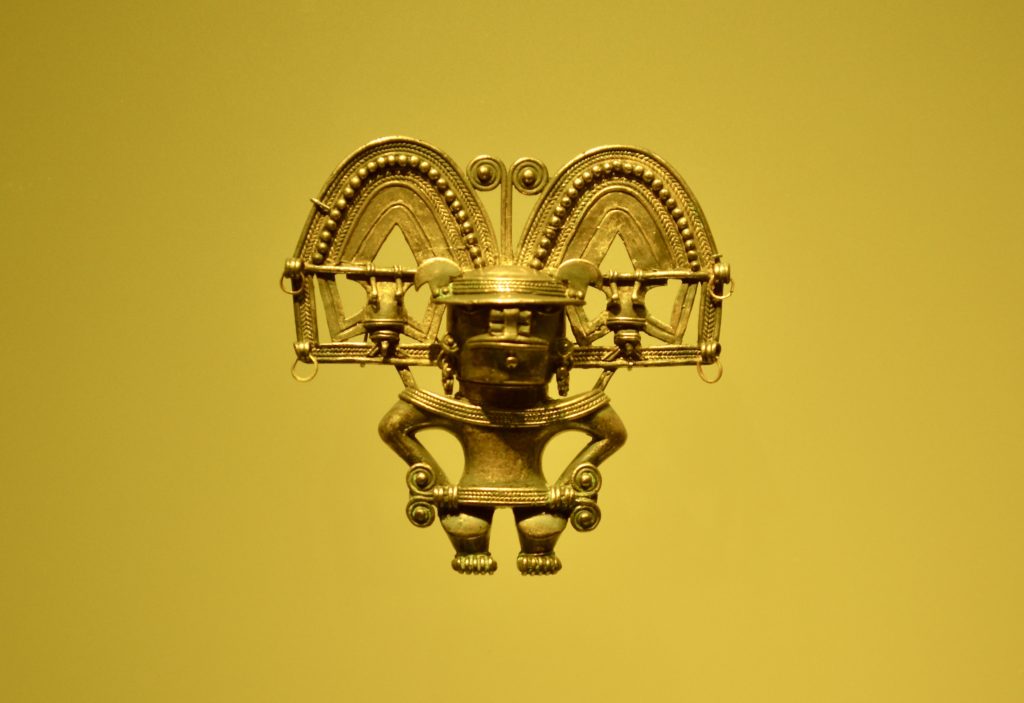
On our first full day it rained a lot so we returned to two of Bogotá’s world class museums, starting with the world renowned Museo del Oro. Entrance to the museum only cost COP 4,000, which is less than a pound and the museum contains some of the best examples of worked gold in the world. it is easy to see why the Spanish conquistadors wanted to get their hands on the gold as a way of quickly getting rich and also gaining favours with the Spanish State.
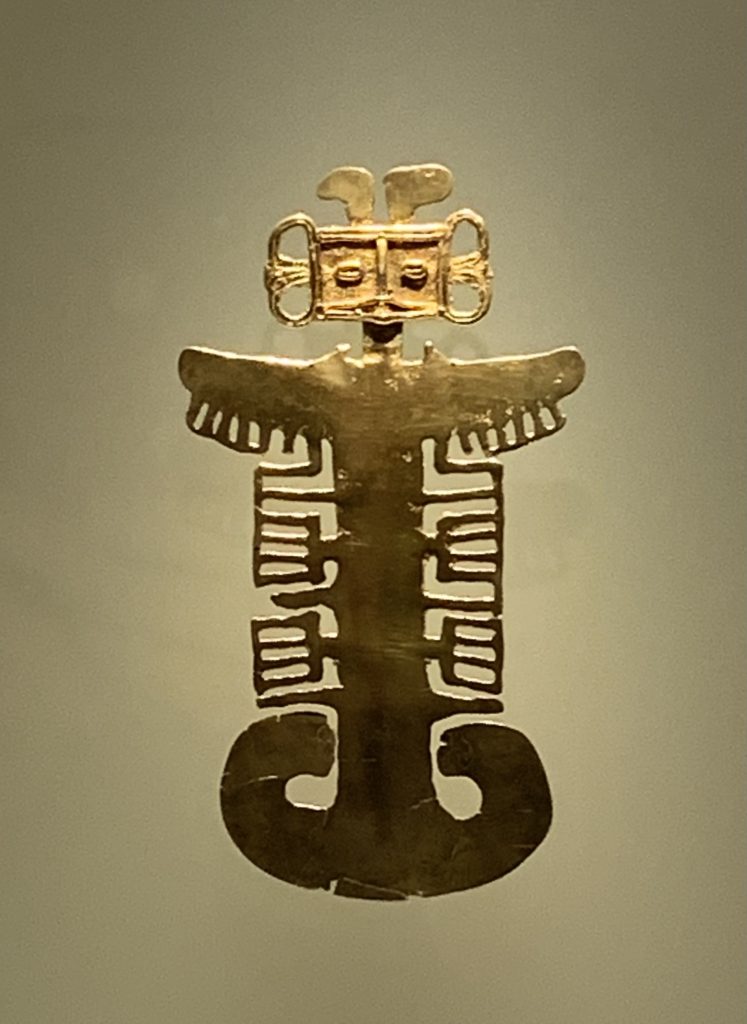
The museum is very well curated and starts with lots of intricate carved pieces of of gold, which would dominate most collections, but then on the next floor you enter into a strong room which contains even more impressive items. Finally there is another strong room with gold all displayed in patterns with a light show, together with a mock up of sound effects from the religious priests.
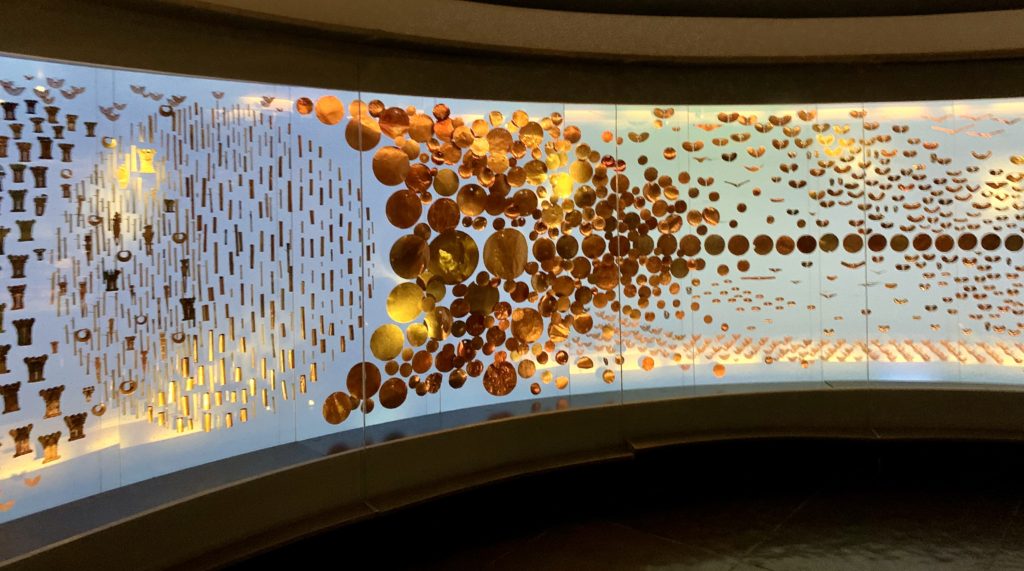
Bogotá’s other world class museum is the Museo de Botero, which contains a large collection of the artist’s own works together with works from other world class artists like Picasso, Henry Moore, and the Impressionists. This museum is free and is situated in a well preserved colonial house.
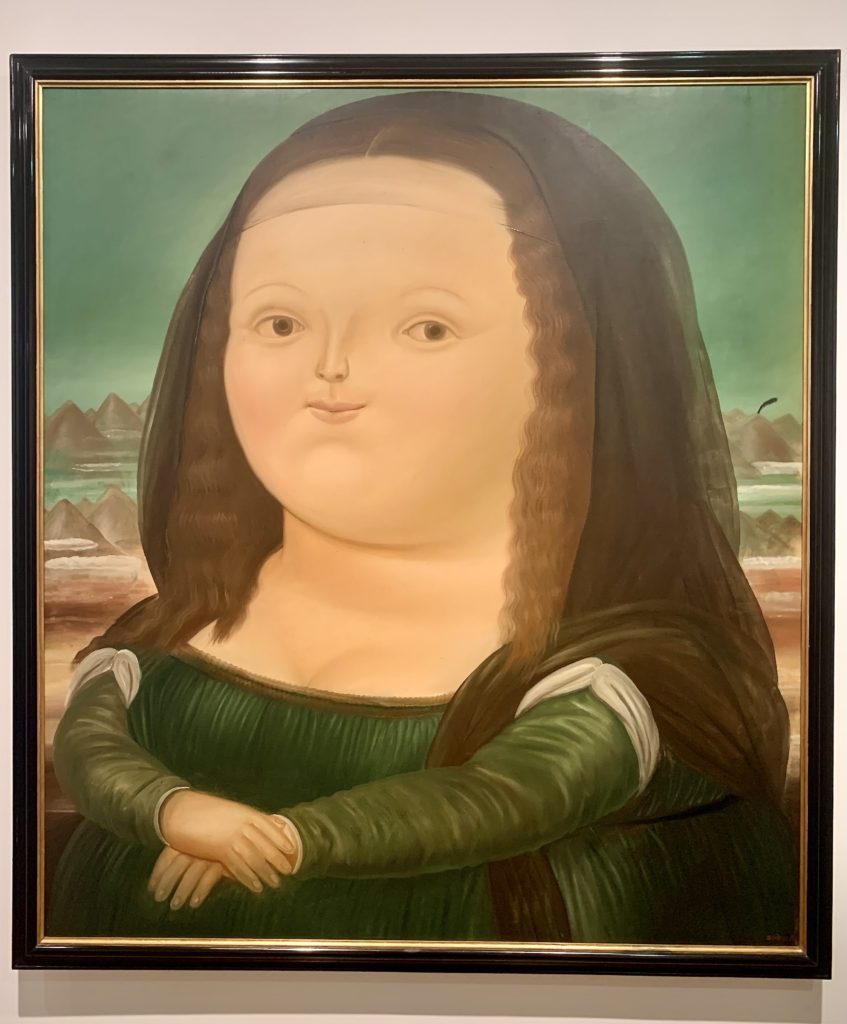
Botero’s trademark of painting and sculpting fat men and women with small mouths always brings a smile to the face. Included within the collection are a number of smaller prototypes of Botero’s public sculptures found around the world including his home city of Medellin and also the reclining lady that can be found in Exchange Square behind London’s Liverpool Street Station.

One of Bogotá’s other great scenes are its bars and nightlife. On our first night in Bogotá, the wonderfully named microbrewery BBC, the Bogotá Beer Company, was celebrating its birthday with a two for one offer in all its bars. It’s beers and ales could almost be English as they are similar to a number real ales back home.
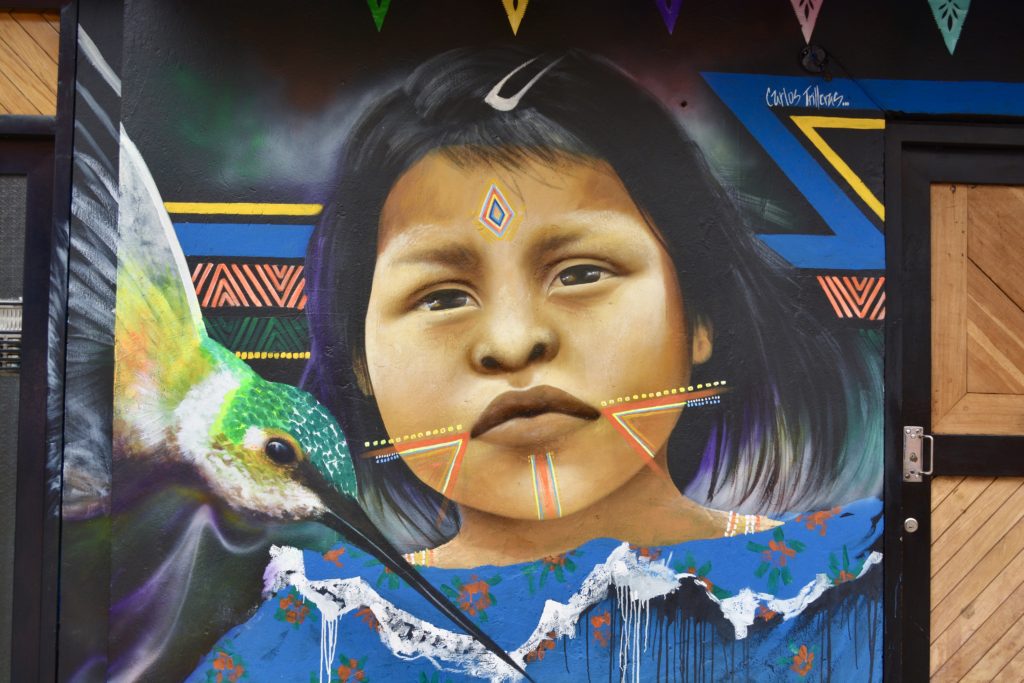
On day 2 the weather was much better so we were able to do more outside activities. One of the must things to do in Bogotá is to go on the Bogotá Graffiti Tour around the Candelaria area, the old colonial centre. Under Covid, this has to be booked in advance, and currently runs once a day at 10:00 am from the Parque de los Periodistas. Our guide Luis was very informative, both on the various graffiti artists and also on the local politics, economics etc. and how that influences the graffiti and street art. Increasingly a lot of the street art is celebrating the indigenous culture so many of the faces reflect this.
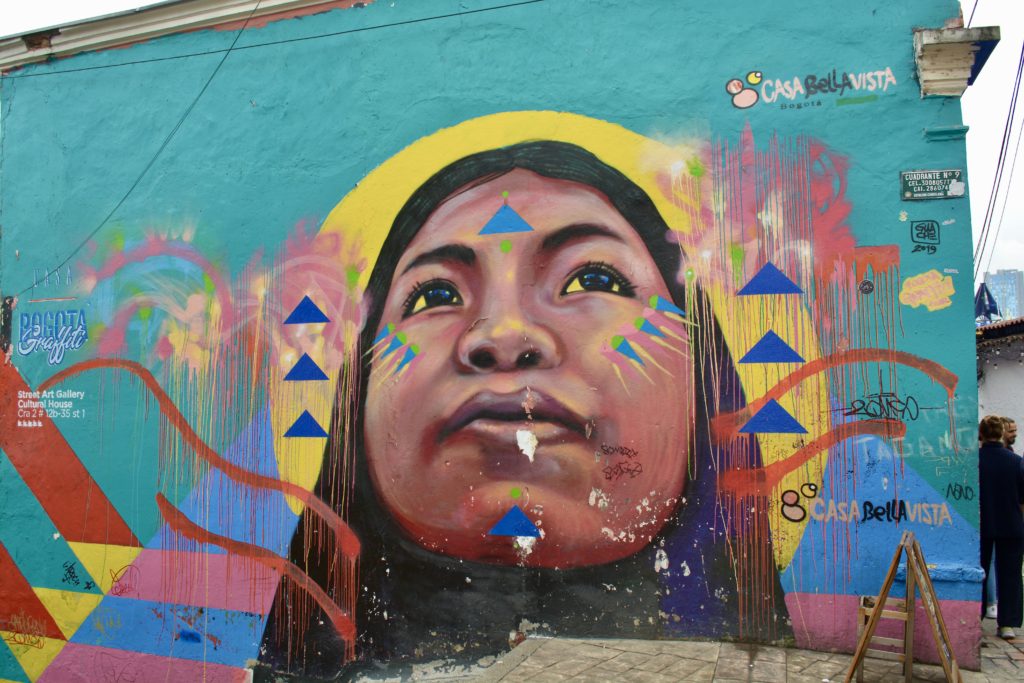
Many of the big pieces of the street art is commissioned work, in that the building owners commission individual or groups of artists to paint their building. Indeed if they didn’t do this their building would be quickly covered in more unsightly graffiti – probably in less than two weeks! There is also a code of honour amongst many of the principal artists not to destroy each others work. Street art in Bogotá is currently in the grey area between being illegal and tolerated by the authorities, especially as some of if is regarded as being world class. Indeed, some of the more spectacular pieces of art that we saw four years ago still remain, indeed some of it is protected with a kind of film to stop random acts by people outside the community from destroying or damaging the work. Below is a mural that was there in 2018 and is protected.
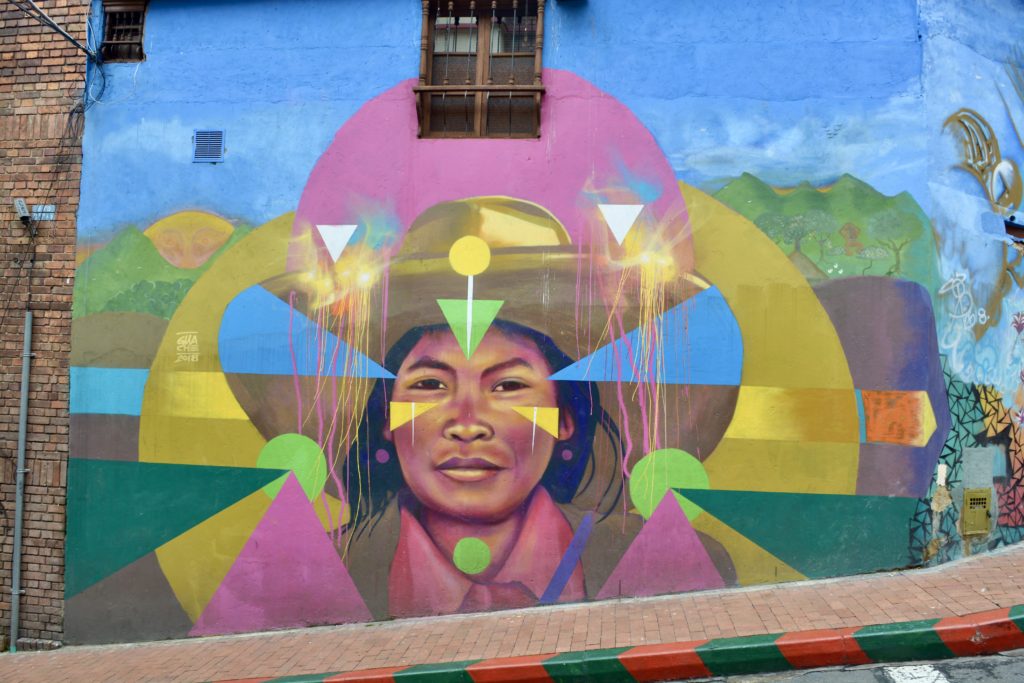
However street art is always an evolving scene and changes whether it be walls collapsing or businesses failing, and as a result new pieces of art will replace the old. The pandemic has resulted in a number of businesses collapsing as rental payments cannot be made, thus buildings change use, or simply become derelict awaiting renovation. Indeed some of the hostels in the Candelaria area have failed as international independent travel collapsed, and these buildings and businesses have been particularly hard hit. Below is a mural of mice, back in 2018 this mural was of cats, but was changed to reflect the Chinese year of the rat.

Up in the Chapinero district where we have traditionally stayed, our little family run hotel, The Matisse Hotel, was still operating, but we were one of only a handful of guests. Also a number of the restaurants nearby had clearly not survived. Notwithstanding this, Bogotá is clearly beginning to come out of hibernation and while there are a handful of international tourists, it is clear that locals are beginning to venture out again and hopefully it should be not too long before things start to get back to the new normal.
Dates visited 26/04/2022 to 29/04/2022
